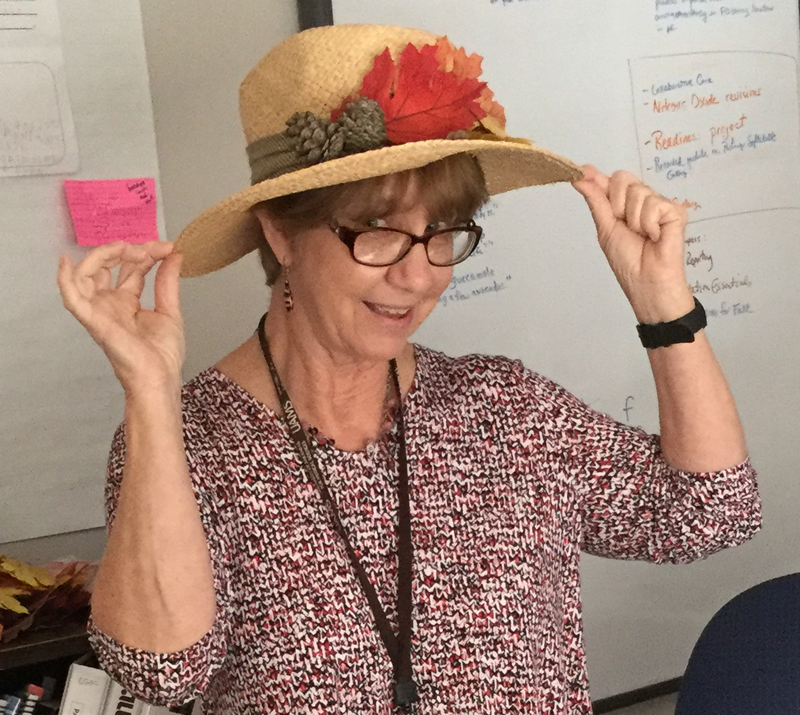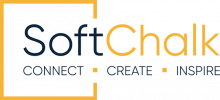
When direct experience with patient assessments plays a key role in medical school education, the question comes to mind: “Is it possible to create an effective, online debriefing of an in-person experiential learning experience?” Lisa Ferris from the University of Arkansas for Medical Sciences believes the answer is “Yes!” In this blog post, you’ll learn how Lisa designed an online module for use as a virtual debriefing for third year medical students.
Creating a Virtual Debriefing for Third Year Medical Students
As an instructional designer for over 30 years, I’ve designed experiential learning activities for corporate and non-profit employees and students in college classrooms. My favorite part of designing experiential learning is creating an engaging and meaningful debriefing. It’s rewarding to help students critically examine their experience, reflect on any knowledge gaps, fill in those gaps, and consider options to answering future questions.
So, here’s a question for today’s educator. Is it possible to create an effective, online debriefing of an in-person experiential learning experience? I believe the answer is “Yes!”
I currently help faculty design their courses at the University of Arkansas for Medical Sciences. Experiential learning is at the heart of our education in the health professions. Students master foundational knowledge and skills and then apply that knowledge in experiences with simulated and real patients. Our faculty typically provide feedback or debrief the experience with individuals or groups of students. In our medical school curriculum, these debriefings become increasingly important when students enter their third year of medical school and start their clerkships (month-long rotations in various medical departments). During these clerkships, students typically encounter real patients for the first time.
If you’re like our busy faculty, you may want to provide your students with meaningful debriefings of activities, but are often faced with time, scheduling, and delivery challenges. To address these challenges in the Family Medicine clerkship, we created a virtual debriefing in SoftChalk.
In 2013, I helped Dr. Arlo Kahn, the clerkship director in the Department of Family and Preventive Medicine, to create the online module, “Nutrition and Cardiovascular Disease: A Virtual Debriefing of Patient Assessment Activities.”
Five years later this module is still being used during the Family Medicine clerkship. I’d like to reflect on this project’s how, what,—and so what—in case our solution might work for fellow educators. I believe the process and SoftChalk activities we used are applicable for different levels of learning and content across different disciplines.
Background
Each month, 10-14 third year medical students complete a four-week rotation in Family Medicine. The group is scattered across Arkansas, at the Little Rock main campus and seven regional sites. For many students, these rotations are their first exposure to real patients, unless they volunteer at our free student health and wellness center. They are supervised by the attending physicians at the clinics and the site directors. The medical licensure board requires all sites to provide a comparable experience for all students.
During the clerkship in Family Medicine, students complete a cardiovascular disease and nutrition assessment on 10 patients they see in the clinic, using a booklet they are required to fill out. The student chooses one patient and completes a habit and nutrition assessment. They describe the patient’s current treatment, stage of readiness to change, and recommendations for dietary and lifestyle changes. Prior to 2013, students met later with the site director or designee and discussed their findings. For example, students at the main campus met with Dr. Kahn for 1 ½ – 2 hours. At the beginning of the discussion, Dr. Kahn posed questions that elicited review of medical content learned during the first two years of medical school, such as risk factors for cardiovascular disease and nutrition. Students discussed information from their completed patient assessment booklet. They were also exposed to new information and online calculators for determining cardiovascular risk. This debriefing provided an important bridge between their previous medical school training, real patient assessments, and the family medicine experience.
Dr. Kahn was concerned that the quality of the discussion and feedback in other locations were not consistent. Also, if faculty or scheduling changes occurred a method to continue the debriefings was needed.
The Solution
Because of the concerns, we created the interactive, online debriefing that allows students across Arkansas to have a similar, consistent experience. It takes a student about 1 ½ hours to work through module content and scored activities. The students are required to complete the module to receive a clerkship grade.
To simulate the in-person debriefing, the SoftChalk module used:
- An introductory video of Dr. Kahn discussing the debriefing’s integration with the in-person patient assessment activities
- Questions to recall foundational knowledge
- Mnemonics to aid in recalling information
- Rollover links to advice or answers to questions
- Extensive feedback to posed questions to prompt their thinking and provide additional information to investigate
- Practice inputting patient data into online risk calculators, analyzing results, and drawing conclusions
- Integrative use of the patient information students gathered in the clinic
- Evaluation questions to gather feedback from students
- Additional resources and tools
The Development Process
To develop the module, I recorded one of Dr. Kahn’s in-person debriefings to capture the sequence of the discussion and the content. Since he had conducted the debriefings countless times, Dr. Kahn knew the most effective questions, feedback, and activities. For example, he would pull up online risk calculators on his computer and with the students, he would enter patient scenarios and discuss the results.
Based on the recorded conversation, I then created a draft organization of the SoftChalk module. I also investigated ways to use SoftChalk tools to simulate the question/answer format with feedback and additional information. Dr. Kahn and I met over several months to build the module. It was then published into our Blackboard LMS and first tested with one medical student. Over a series of clerkships, the module was used by students and tweaked for improvements. A version for graduate medical students is also available that uses the ScoreCenter to capture grades.
Debriefing the Debriefing
Over the past five years, the module has undergone a few minor revisions to clarify content questions from students and remove or replace outdated links. The majority of the content and activities remain the same.
Here’s what we’ve learned:
- A solid face-to-face debriefing makes it easier to create an online version. A good debriefing is a rich conversation between student(s) and instructor. It might include feedback from the instructor or peers, but the value is on the student reflecting and creating meaning from the experience. If you’ve had success with conducting an in-person debriefing, you can follow the same sequence, use a question and answer format for some of interaction, require students to input data, compare/contrast standardized patients, and draw conclusions.
- The module remains relevant and appreciated, per student end of module feedback. Students were asked two evaluative questions noted below with representative comments:
- What did you like most about this review and debriefing module?
- “It was interactive and concise, yet relevant to the population that we serve.”
- “It was brief, easy to understand, and integrated material that we actually collected from real patients we saw.”
- “It had good detail on counseling patients. Good reminders about the daily recommendations.”
- “It helped me think deeper about this information!”
- “I liked that it allowed me to really get to know the patients because I got to sit down and ask them questions about their daily life.”
- “I liked the short informative reviews that I can easily remember and can relay to my patients e.g. grams of fiber recommended per day.”
- What would you improve?
- “Some of the links don’t work.”
- “It’s VERY glitchy. When answer boxes would pop up I couldn’t minimize them and I kept having to refresh the page.”
- “More short video clips to reinforce the material mentioned in the text.
- “More analysis of the patients I tracked with the nutrition booklet.”
- Integrate course components where possible. Student feedback frequently noted the value of integrating the online module with the in-clinic conversations with patients and completion of the assessment booklet. Content among the three components addressed different levels of learning—from recall of foundational information to application and analysis of information from patient assessments.
- Be proactive about technical issues. Per the feedback, external links can change without warning. Sometimes students would alert us that some links were broken or sometimes just skipped past them. Also, check the module in different browsers on different devices to understand how students will be experiencing the module.
- Be proactive about content issues. Assign someone to be course owner/reviewer and respond to student questions on the content. Review the module periodically to ensure content is updated and all links work.
- Consider student workload. When evaluated with the multiple requirements of the month-long clerkship, the module’s ratings were lower. This may be a reflection of heavy work and study load and/or clerkship design that needs further investigation.
After this module became a standard part of the month-long clerkship, we used SoftChalk to create two other interactive modules—Preventive Care for the Family Physician and Patient-Centered Medical Home. As appropriate, we applied the lessons learned from the virtual debriefing module to the newer modules. Although minor content revisions have been needed over the past five years, our efforts in design and development have paid off in terms of consistent learning opportunities for medical students across our state and integrated learning activities that remain relevant for several years.
 Lisa Ferris is Assistant Professor- Instructional Design, Office of Educational Development, at the University of Arkansas for Medical Sciences. She holds an Ed.S in Instructional Systems Technology, an M.S. in Telecommunications, both from Indiana University, and a B.S. in Journalism from the University of Colorado. An educator for 30+ years, her first teaching job was with the Peace Corps—Burkina Faso where she taught English as a Foreign Language and learned a lot about cultural humility. She has since developed instructional materials and training for telecommunications, non-profit groups, healthcare, and higher education. Her areas of interest include discovering innovative, online solutions for health professions education, translating active learning in the classroom to online delivery, and tutoring kids in reading. She can be reached at lgferris@uams.edu.
Lisa Ferris is Assistant Professor- Instructional Design, Office of Educational Development, at the University of Arkansas for Medical Sciences. She holds an Ed.S in Instructional Systems Technology, an M.S. in Telecommunications, both from Indiana University, and a B.S. in Journalism from the University of Colorado. An educator for 30+ years, her first teaching job was with the Peace Corps—Burkina Faso where she taught English as a Foreign Language and learned a lot about cultural humility. She has since developed instructional materials and training for telecommunications, non-profit groups, healthcare, and higher education. Her areas of interest include discovering innovative, online solutions for health professions education, translating active learning in the classroom to online delivery, and tutoring kids in reading. She can be reached at lgferris@uams.edu.
The module “Nutrition and Cardiovascular Disease: A Virtual Debriefing of Patient Assessment Activities” won third place in the 2014 SoftChalk Lesson Challenge!

Leave a Reply